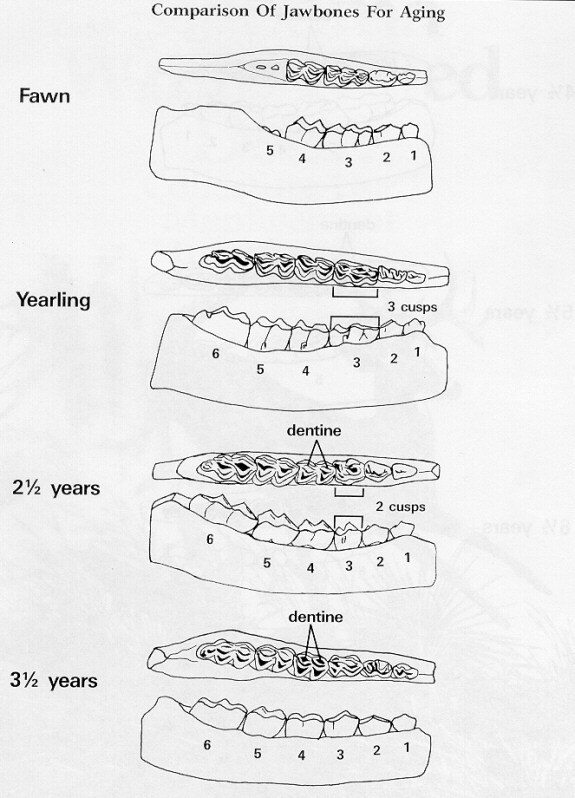Looking at the teeth of a deer can give you an idea of a deer’s age. It’s not a perfect science, but when it comes to wildlife management what really is? Wildlife, including white-tailed deer, do not lend themselves to close monitoring. However, biologists agree that analysis of tooth replacement and wear, though not perfect, is the most reliable method for aging white-tailed deer in the field.
Tooth wear works because regardless of where a deer lives, animals lose their “milk” teeth and wear out their permanent teeth on a fairly predictable schedule. At birth, white-tailed fawns have only four teeth. Adult deer have 32 teeth. This include 12 premolars, 12 molars, six incisors and even two canines.
When it comes to aging deer by their teeth, aging analysis often is based on the wear of the molars, which lose about 1 millimeter of height per year. Using these measurements, it takes a deer about 9 to 11 years to wear its teeth down to the gum line! As you can imagine, it is quite difficult to determine the age of a whitetail deer that is over 10 years in age.
The ability to estimate a deer’s age based on the wear of its teeth is not easy, but it is something anyone can learn with a little practice. Wildlife biologist willl often disagree on an individual deer’s age, but they are using talking about 1 year in either direction. Using tooth wear is not foolproof, but it will definitely tell you if the jaw you have in your hand is young, middle-age, old, or very old.

Some people are not going to look at its teeth to see how old it is